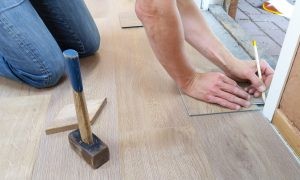Renovating can increase rental yields and improve cash flow but there are important rules and regulations investors should be aware of before getting started. For example, investors who live in their investment property while renovating risk missing out on thousands of dollars in property depreciation deductions.
The Australian Taxation Office allows owners of income-producing properties to claim depreciation deductions for the natural wear and tear that occurs to a building and its assets over time. Depreciation can be claimed for a building’s structure via capital works deductions and for the plant and equipment assets contained within the property.
According to legislation introduced in 2017, investors are unable to claim deductions for the decline in value of previously used plant and equipment found in second-hand residential properties. If an investor lives in their rental property while renovating, any newly installed assets will be classed as previously used. As a result, the investor is at risk of losing their tax benefits.
Landlords who are planning on installing new plant and equipment assets should make these additions after they move out of the property and it has been listed for rent. This will ensure they’re eligible to claim the maximum depreciation deductions available.
It’s important to note the 2017 legislation does not affect buyers of brand-new property, residential properties considered to be substantially renovated or commercial properties. With this in mind, brand-new property generally holds the most lucrative value for investors from a tax perspective.
Capital works deductions for structural assets such as new walls, kitchen cupboards, toilets and roof tiles are also unaffected by the legislation changes and can still be claimed by owners of income-producing properties. These deductions typically make up 85-90 per cent of a total depreciation claim.
When removing structural assets there may be remaining depreciation deductions available. A process known as scrapping can often be applied, allowing investors to claim these deductions in the year the items are removed.
Regardless of the 2017 legislation changes, there are still lucrative tax deductions on offer for most investment properties. During the 2017/2018 financial year, BMT Tax Depreciation found residential property investors an average first year deduction of almost $9,000. To ensure you aren’t at risk of missing out on valuable deductions, we encourage a consultation with a Specialist Quantity Surveyor before starting renovations.
If you would like to be put in touch with a specialist for further information or assistance please don’t hesitate to contact us!
